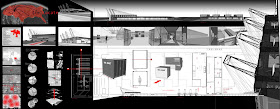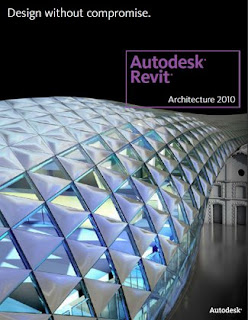By Vince Burdi
Have you ever found yourself pulling all-nighters the during finals week? If so, you are not alone. Time management is not something that comes easy to most college students. In fact, there are too many distractions that get college students off track ranging from social networks to reality television. In order to avoid these all-nighters, we have to make responsible decisions early on during a project. Seems simple enough, but it was even something I struggled with this past summer.
Dr. Walter Wendler wanted his students to consider the lack of time during the summer semester. Dr. Wendler explained, "Make a decision in order to have something to work on early. There are no bad decisions at the beginning of a project only at the end." Dr. Wendler wanted his students to stand by their choices throughout the course. By defending our work we became more responsible for our choices, which in my opinion made our projects stronger. What I have learned this summer is that design is never going to be perfect. As many times as you think you can change your work to become “perfect", it just will not. Progression is truly the only objective we should concern ourselves with. Below, I have outlined 6 easy steps to avoid the dreadful all-nighters.
Step 1, use the syllabus, it is a great tool that most students tend to forget. The instructor has obviously taken the time to write what he/she expects from you. So, take the time to read it and yes, try to actually stick to it.
Step 2, mark your calendars. Some of us are new to the campus life, but those of you who have been here before know the temptations around us. By setting up your schedule ahead of time, you can plan around parties, bars, vacations, etc.
Step 3, instead of waiting to the last minute, set times up during the day to work and study. Find a good study area and make it a ritual by going every day. Before you know it, you will begin to miss the place. Hint: the printing does take time, so do not wait to the final day to print. Get in the habit of printing before your deadlines.
Step 4, turn off the technologies. I know it seems impossible, but try to spend less time on Facebook, Twitter, YouTube, Xbox, television, phone, you name it. The only reality about reality TV is that those people are making money while you watch them for hours. So, do yourself a favor and study, you might have something to contribute in class.
Step 5, make decisions early about your design during a project. Figure 1-a represents two types of time management. The red line represents someone who waits towards the end of the project to make decisions about their design. This will ultimately leave someone with little or no time to work out the details of the project. Forcing a person to spend late nights cramming their work the last week before it is due. The blue line represents someone who begins to make decisions early on. The persons level of work does not drastically change, and there is a consistency to the time and energy spent on their work. Making decisions early not only allows a person to correct their own mistakes but does make for stronger design.
Step 6, follow through on your work. Many people can come up with the ideas, but when it comes down to getting on paper, they fall short. Remember not to wait to last minute, but just in case you should have some sort of computer malfunction. Trust me when I say this, it does happen. A log of your notes is a last resort. Keeping clean notes always helps your professor/boss track your work and he/she may be a bit more understanding when you fall behind. There you have it steps to avoid the dreadful all-nighter.
There are plenty of ways to fall behind, but if you stick to these steps you should find yourself on a smooth track that does not include late nights, coffee, and red bulls. Hope this helps and good luck on the rest of the semester!

Figure 1-a - Design Energy
*Note: the same amount of energy is spent between sections A and B. Instead of waiting to the final week (red), you can start making decisions early on (blue) during the course of a project.


































